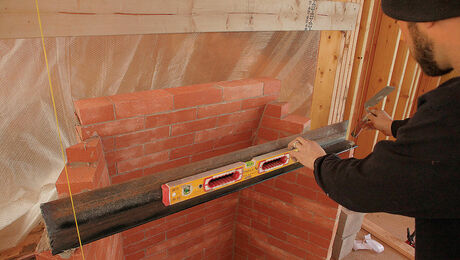In addition to being a hard core diyer, I must admit to being a trial lawyer(although exclusively defending homeowners, businesses, contractors, etc. subjected to frivilous suits). I am currently defending a local Boys/Girls Club where someone claims to have gotten a shock while attemting to turn on a light switch… the ‘KEY” type used in such facilities to prevent kids from fooling around with the lights. The client tells me that the switch in question is no longer connected to anything as the result of an earlier remodel. It had been part of a three-way switched light circuit which was eliminated. The box and switch were left in the cmu wall and , supposedly, a live hot lead remained connected to the switch. Obviously I need to confirm this and have the switch examined for defects. If this setup was as described, is this a code violation or at least poor practice ? It seems that the power should have been disconnected at the nearest downstream junction box or the switch should have been removed, the wires capped, and a solid cover plate installed over the box. (The injured party was unfamiliar with the facility and didn’t realize the switch controlled nothing) If the answer is yes, any liability should rest with the electrical contractor. I appreciate any comments.
Discussion Forum
Discussion Forum
Up Next
Video Shorts
Featured Story

Get expert guidance on finding a fixer-upper that's worth the effort.
Featured Video
Video: Build a Fireplace, Brick by BrickHighlights
"I have learned so much thanks to the searchable articles on the FHB website. I can confidently say that I expect to be a life-long subscriber." - M.K.
Fine Homebuilding Magazine
- Home Group
- Antique Trader
- Arts & Crafts Homes
- Bank Note Reporter
- Cabin Life
- Cuisine at Home
- Fine Gardening
- Fine Woodworking
- Green Building Advisor
- Garden Gate
- Horticulture
- Keep Craft Alive
- Log Home Living
- Military Trader/Vehicles
- Numismatic News
- Numismaster
- Old Cars Weekly
- Old House Journal
- Period Homes
- Popular Woodworking
- Script
- ShopNotes
- Sports Collectors Digest
- Threads
- Timber Home Living
- Traditional Building
- Woodsmith
- World Coin News
- Writer's Digest


















Replies
I would think that the fact that it was not supposed to be in use is a moot point. One should not get shocked in the normal operation of any electrical device. Assuming the injured party was not prying off a cover or something like that I would think there is inherent liability. Just my gut feeling.
`The answer to the title of your post is, ask the code authority. Since everyplace doesn't use the same code, if they have one, then the code authority should be able to give you an answer.
As to practice. The electricians can answer that.
How much time went by between the remodel and the incident? The electrician can say (and this is NOT ment to imply they are lying) there was a change after they left. Did anyone do something to the ckt after the incident? Sure it wasn't static electricity?
Didn't the inspecter check?
bobl Volo Non Voleo Joe's cheat sheet
If it wasn't for lawyers we wouldn't need lawyers.
There are lots of variable to this.
1) Imagine that the switch had not been renovated but kept as it was. If the switch was live and operable any user would be protected , if the equipment was properly maintained and not abused, by a non-conductive cover plate or if made of a conductive material it would be effectively grounded. The switch itself, a dead front design, is designed keep all current away from casual contact. The key type is also designed to prevent the metallic key from coming into contact with live surfaces. The failure of the switch, discounting damage or abuse, to maintain this electrical separation would imply, IMHO, a manufacturers fault.
2) Even using a non-standard key, a small screwdriver or knife blade can sometimes be an expedient substitute, I find it hard to think of any easy way to come into contact with anything live without forcing the usual motion or removing the cover plate.
3) If the box containing the switch was wired through conduit it would be considered good practice to remove the wires. If it was wired with a preassembled cable assembly, romex or MC being the most common, there would be no way to, within reason, to remove the conductors. They would be capped off and tucked into the back of the box, the switch removed and the box sealed with a blank plate.
4) If a live conductor was left in the box and left uncapped or the cap, insulation, was to fail or fall off the live wire could come into contact with the box. There is a requirement that all conductive boxes be properly grounded. If the live wire was to contact the grounded box it should have blown the circuit breaker. If the box was not grounded or the ground was not maintained when the circuit was modified the box could become live. This could allow a conductive cover or just the mounting screws, assuming they are not plastic, to be both live and easily accessible.
5) If the switch, cover plate or box had been abused, not an unlikely event in a Boys Club, it is conceivable that the live surfaces could be exposed and become a danger to anyone feeling for a light switch. A missing cover plate could allow fingers to slip between the box and switch body and to contact the energized screws on the side. If the switch were further abused, typically by overly energetic use of the key or a substitute, the switch could split and the insulating front fall off. This would expose live surfaces to easy contact but would only happen after the cover plate had fallen off as the plate would otherwise hold it in position and maintain its insulating function.
No conclusions here but I hope this helps. Please let us know how this goes. The legal aspects of electrical work holds some interest for me.
Did they get seriously injured? Are they still alive?
If they weren't injured and are alive, then you shouldn't have a problem if you get a jury with good common sense. My goodness this country needs help.
Whaaaaa Whhaaaaa I got shocked....whaaaaa whaaaaa
I'm gonna sue...................
Thanks for the replies with only minimal lawyer bashing.(Stupid juries are the real problem). I have serious doubts that the incident even happened(no witnesses) since she could not have gotten a shock unless the switch was defective or there was a loose hot wire creating a ground fault insufficinet to trip the breaker(20 amp). I went out and looked at the setup and confirmed that there is a hot lead (yellow?)coming into the box thru rigid metal conduit and was firmly connected to the switch. The switch looks ok, but I will have it tested. Another yellow wire was connected to one of the "traveler" terminals on the switch and exits the box to who knows where. No wire is connected to the other terminal on the switch and there are no loose pigtails to which it might have been connected. I located the breaker for the circuit which was marked as controlling the lights in the remodel area which were eliminated and there is no indication that it provides power to anything else. When the breaker was turned off there was no more power to the switch. There was no marking on the breaker or panel indicating that the circuit was dead and that the breaker should remain off.
Even though this woman probably is a fake phoney fraud (that's the jury's call), it seems that there was no good reason to leave this circuit in this condition. The switch could easily have been removed and the hot lead capped and the breaker could have been removed/disconnected or at least turned off and marked. We will try to get an answer from the electrical sub, but this might be hard after ten years.
Any additional feed back is appreciated.
How can we trust that you are actually representing the defendant and not the plaintiff? You are, after all, a lawyer.
Sorry, couldn't help myself.
If someone was shocked, then the switch or box was energized.
Was the switch damaged? The key switch may of had an object inserted into it and it could of been broken allowing contact with an energize part.
Is it mounted in a metal box and was the box grouded through a low impedance path back to the source.
I would have the switch and installation investigated by a forensic specialist, and the party bringing suit may want to be part of the investigation.
Even if not used the switch would present no shock hazard unless something was damaged or modified in a remodel.